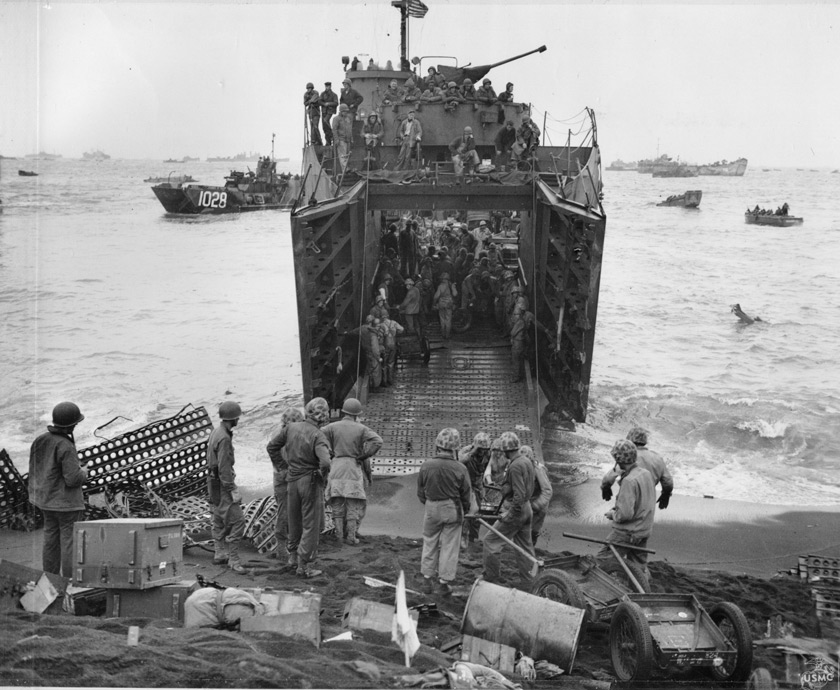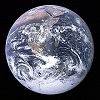9: World War II - 1939-1945
- Page ID
- 147164
- Understand the development of the largest war in human history
- Explore the horrific costs in human life (war casualties, the Holocaust, atomic weapons)
- How did the events that culminated in a New World Order at the end of 1945 set the stage for the following 70 years?
- How did World War II challenge the domestic order of patriarchy, which dominated Western societies since the dawn of agriculture?
Introduction
In many ways, World War II was a continuation of the first Great War, especially in Europe. Germans supported Hitler and the Nazis because they promised to overcome the humiliation suffered at the Versailles peace conference in 1919. Germans were forced to admit “war guilt,” pay massive reparations, loss of territory, and limit the size and quality of their armed forces. The Nazi regime promised to reverse all of it and establish a powerful new German Empire as the dominant force on the Continent. However, World War II was also a result of the worldwide reaction to the Great Depression, which was seen by many as not only a failure of capitalism but also a failure of democracy. Both fascism and communism offered plausible solutions to the crisis. Although neither the Nazi nor the Communist parties in the German Weimar Republic ever won a majority in a contested election, by 1932, most German voters opted for one or the other, and essentially voted against liberal democracy. Germany was not alone in abandoning democracy and embracing authoritarianism; Southern and Eastern Europe, Latin America, and Japan witnessed similar events. Chapter 8 explained how the Japanese military, taking the initiative against the weak objections of Japan’s elected government, initiated the first conflicts that evolved into global war by invading and occupying the northern Chinese province of Manchuria in 1931. Again, it is striking how similar the racial beliefs in the Japanese military were to those of the Nazis: the “Yamato” people of Japan had a special mission to dominate East Asia in the same way that the “Aryans” of Germany were destined to rule all of Europe. Eventually in February 1945 US Marines landed on the island of Iwo Jima (see Figure 9.1) as part of Allied strategy to defeat Japan. The Battle of Iwo Jima was one of the costliest and bloody wars in US history. Figure 9.1 is a black and white photo taken in February 1945. It shows a US Landing Ship that has dropped its ramp very close to the beach. Several soldiers are seen on the ship as well as on the shore. The rear gates of ship are wide open and soldiers are using the ramp to bring out the supplies from the ship to the shore.

Figure \(\PageIndex{1}\): US Marines unloading supplies on Iwo Jima Beach in February 1945, US Marine Corps Archives, in the Pubic Domain.
- 9.1: The Road to War in Asia
- World War II began with the Japanese invasion of China on July 7, 1937. Japanese military planners, believing that American intervention was inevitable, planned a coordinated Pacific offensive to neutralize the United States and other European powers by providing time for Japan to complete its conquests and fortify its positions. On the morning of December 7, 1941, the Japanese launched a surprise air attack on the American naval base at Pearl Harbor, Hawaii.
- 9.2: The Road to War in Europe
- The belief that a nation’s greatness lay in war and conquest was fundamental to the fascist ideology in both Italy and Germany. Atrocities were typical of the racism inherent in fascist regimes, who thought that using such terror was the only way to “teach a lesson” to “inferior” conquered peoples.
- 9.3: The Road to Victory
- The Battle of Stalingrad was the turning point of World War II. In the summer of 1942, American naval victories at the Battle of the Coral Sea and the aircraft carrier duel at the Battle of Midway crippled Japan’s Pacific naval operations.
- 9.4: Important Battles and Conferences
- After the Soviet victory at Stalingrad, Roosevelt, Churchill, and Stalin met several times and began post-war planning. The Allies had already begun calling themselves the “United Nations,” especially as Latin American republics and other countries began joining the fight against the Axis. To avoid another Great Depression it was agreed that war-torn nations would need to be rebuilt rather than penalized (as they had after Versailles).
- 9.5: Human Costs of the War
- As the Allies pushed into Germany and Poland, they uncovered the full extent of Hitler’s genocidal policies. The Allies liberated elaborate camp systems set up for the imprisonment, forced labor, and extermination of the Jews and other “undesirables” including Roma (“gypsies”), political prisoners, outspoken pastors, members of the resistance, individuals from the LGBT community, and pacifists.
- 9.6: US Industry and the Home Front
- In modern warfare, national economies are equally if not more important than national militaries. The war effort converted American factories to wartime production, restored America’s economy to full employment, armed the Allies and American forces, pulled America out of the Great Depression, and ushered in an era of unparalleled economic prosperity.
- 9.7: Chapter Summary and Key Terms
- What was begun in 1914, the unraveling of the “Modern Era” with all its empires and social structures, was completed in 1945 with the collapse of the Axis orders and the transformation of the Allied victors.
Thumbnail: British Prime Minister Winston Churchill, U.S. President Franklin Roosevelt, and Soviet General Secretary Joseph at the Yalta Conference, National Archives (NARA), in the Public Domain.


